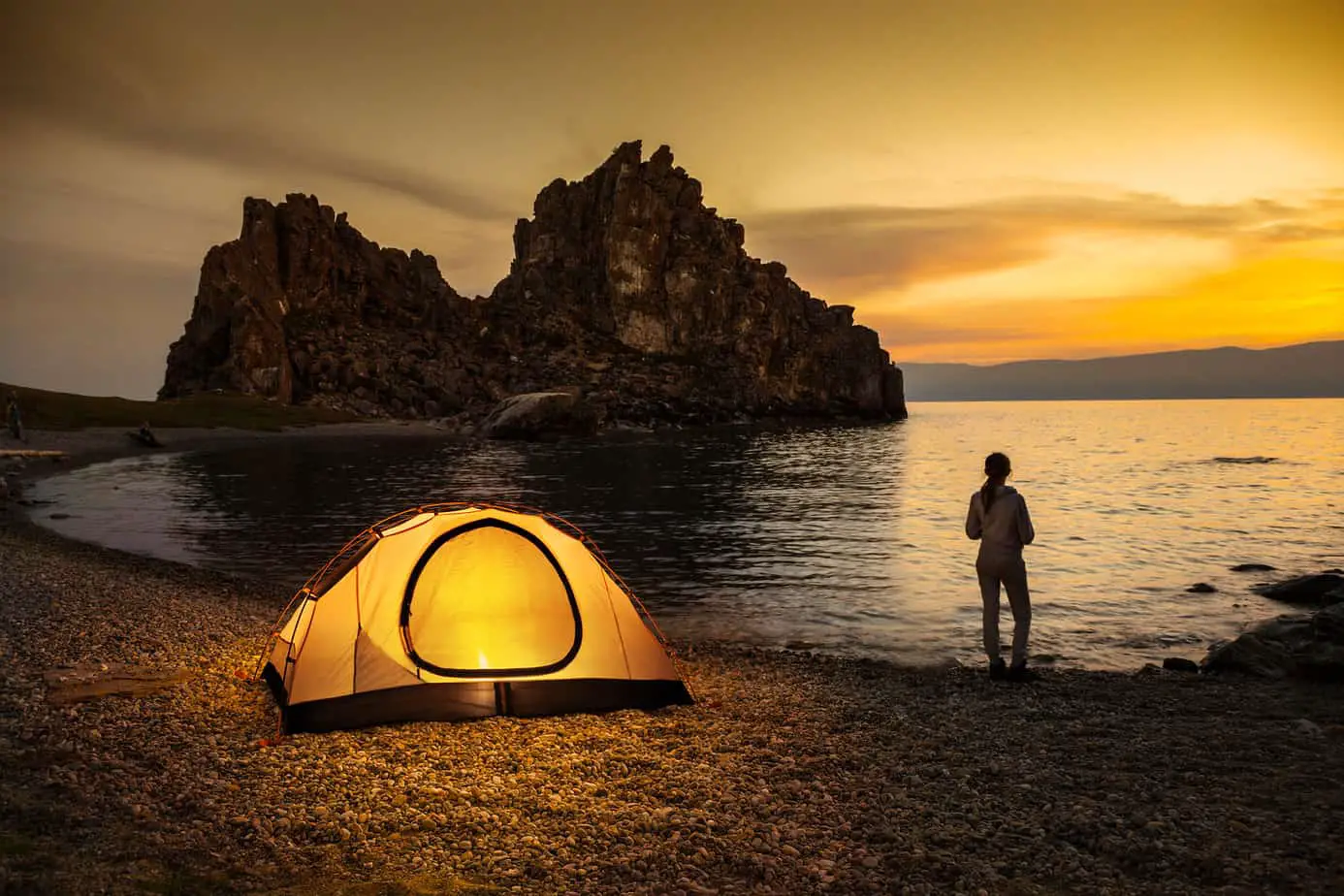
Are you looking to get the extra mile out of your new tent?
Proper care of your tent will ensure it lasts for many years and cares for you well in return. If you neglect your tent, it will wear through and mold to pieces. I have had the same tent for about 10 years now, because I follow these simple tips:
Location
There are many things to consider when setting up a tent. Here are a few things to consider that will help protect the tent itself.
Make sure you clear out any sticks or rocks that might punch a hole through your tent, but try not to disturb the ground too much. Watch overhead for trees with dead branches that could tear a hole in a tent if dropped. Watch also for wet patches on the ground which may indicated places where water collects in a rainstorm.
Shoes
Leave your shoes outside the tent! This simple practice will prevent you from tracking mud, small rocks, and sharp sticks in your tent. Once tracked into a tent, this type of debris not only makes a mess, it can also cut into the fabric when stepped on.
Most rainflys will extend over the front or out the side creating a small vestibule area next to the tent. This vestibule is a great place to store shoes to keep them dry, or let them dry out when conditions are wet outside.
Handling Trash
In spite of your best efforts, your tent is going to collect a small amount of dust, trash, and other debris over a night of camping. You can blame your tentmate(s) for this, but it will still need to be cleaned up before you pack back up.
The easiest way to sweep out a free-standing tent is to pick it up with the door facing the ground, and give it a few gentle shakes. This works so well, you’ll wonder why you can’t do this with your house. For larger tents, or tents that are not free-standing, you’ll need a small whisk broom. If you’re backpacking, use a sock or your tentmate’s tshirt as a makeshift broom to brush everything out of your tent. Be sure to pack out any pieces of paper, wrappers, or other trash that weren’t on the ground to begin with.
Rain Fly for UV Protection
A tent’s rainfly can do more than protect you from the rain. Over several camping trips, the sun’s radiation will slowly take a toll on the fabric. The sun will cause discoloration and degrade tent fabric, even if it has been uv protected.
Because your tent fly can be more inexpensively replaced than the tent body itself, leave the rain fly on during the day when you are away for extended periods. This can be an easy way to extend the life of your tent for many years.
Footprints and Tarps
A ground cloth should be used underneath your tent to protect the tent floor from sharp edges on the ground and to protect you from ground moisture. Although tent manufacturers sell “footprints” – a piece of fabric cut to match the shape of your tent floor – they are expensive.
For a less expensive solution, use a piece of plastic construction drop cloth (6 mil thick is great). This can be purchased in convenient squares near the size of your tent and then trimmed with a pair of scissors to match the shape of the tent. These drop cloths are available at home improvement stores, or you can purchase online for convenient delivery to your house.
When using a ground cloth, be careful not to let it extend out from underneath the tent. If it rains, the water will run down the side of the tent, drop onto any groundcloth sticking out, and possibly roll back under the tent to make an inconvenient puddle in your tent. If the ground cloth extends beyond the edges of the tent, simply fold it back so it stays under the tent.
Pole Handling Tip
If your poles have the elastic cord in the middle, don’t swing them around to set them up. Connect each socket hand by hand. If you swing them around and let them snap in, it may chip the poles, and you will have to use the sleeve to slide over the pole (it helps to put a piece of tape around it to hold it on).
Folding Secret
Fold the tent in different places each time you put it away, or the creases may become brittle and crack.
Dry Storage
Always put your tent away dry. If you can’t put it away dry, be sure to set it up and let it air out properly before putting it away. Mold spores are everywhere, and if you leave it damp for long, mildew will overtake the tent.
Seam Sealers
You may need to reapply a seam sealer to parts of your tent.
Cleaning Dirt and Removing Mildew
These tips might have worked great, but what if I already got it dirty or got mildew growing in it? Use a spnge, cold water, and a non-detergent soap to clean your tent. If it gets mildew, you can usually use a mixture of a cleaner (such as MiraZyme or Lysol) and water to clean mildew out. You can mix an ounce of the cleaner with a bathtub of water to soak the tent, or just use half an ounce of cleaner with a gallon of water to clean spots of mildew on the tent.
Make sure you don’t wash your tent in a washing machine (parts of the tent can snag and tear, and the machine will just beat it around and wear it down). Also be careful with commercial cleaners. Many cleaning agents are scented, which will attract bugs to your tent.

